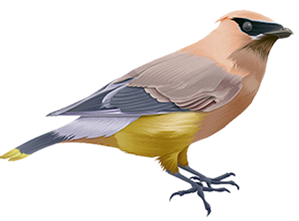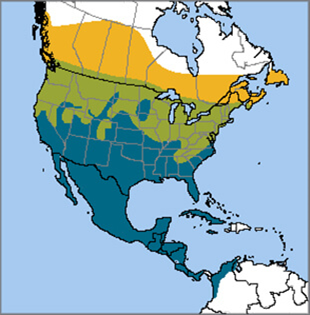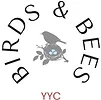LINK TO PDF NEWSLETTER DOWNLOAD

The Cedar waxwing’s genus name, Bombycilla, means “silk-tail” and refers to its dapper-looking plumage. The species name, cedrorum, is Latin for “of the cedars” and reflects its fondness for the small cones of the eastern red cedar.
One of this bird’s most distinctive features is the bright-red, waxy tips on its secondary wing feathers, the result of its fruit-heavy diet.
The “wax” tipping of the Cedar waxwing’s secondary wing feathers is actually an accumulation of the organic pigment astaxanthin, a carotenoid that gives red fruits their colour. The tips increase in number and size with an individual’s age, and immature birds may show no red wingtips at all. Some scientists speculate that waxwings evolved these waxy tips to signal important information—such as age and social status—to other birds within the flock.
The waxwing’s striking yellow tail tip is also the result of the carotenoids that colour the fruit this species loves to eat. In recent years, waxwings eating the fruits of an introduced honeysuckle have grown orange-tailed tips instead!
Cedar waxwings breed much later in the year than other songbirds, to coincide with the availability of summer-ripening fruits. When courting, the male waxwing performs a hopping dance for the female; if she is interested, she will dance with him and the pair hops back and forth together. Courting waxwings will also sit together and pass small objects back and forth, such as flower petals, a berry, or an insect, in a demonstration of their devotion.
Cedar waxwings are vocal birds sounding off with high-pitched cricket-like whistles and buzzy, ascending trills, often described as “sree.” They call constantly, particularly in flight, and are often heard before they are seen.
This species is nomadic, and non-territorial, showing up where food sources are most abundant and then moving on.



